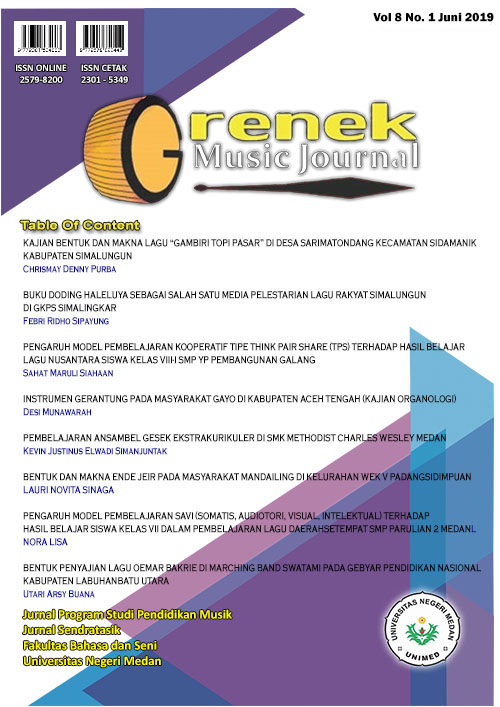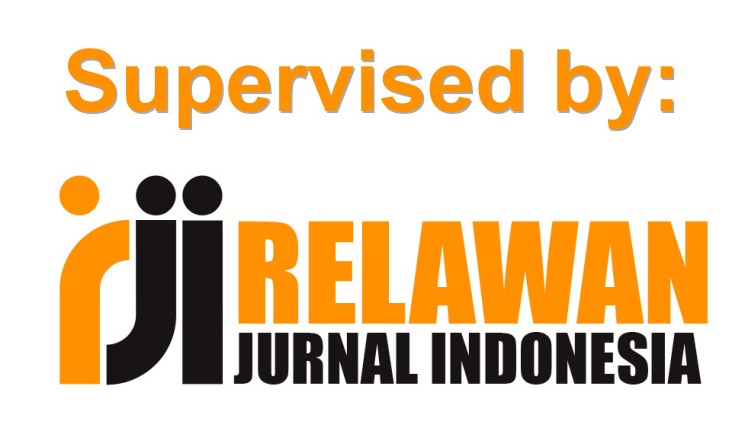TEKNIK VOKAL QORI™AH USTADZAH NURHAMIDAH DALAM SENI TILAWATIL QUR™AN SEBAGAI PEMENANG PERTAMA PADA LOMBA MTQ DI KOTA BINJAI TAHUN 1991
DOI:
https://doi.org/10.24114/grenek.v8i1.13021Keywords:
Vocal Technique, Tilawatil Qur'an, MTQAbstract
Vocal Technique of Qori™ah Ustadzah Nurhamidah in Qur™anic Tilawatil Art as The First Winner in MTQ Competition at Binjai City in 1991. Study Program of Music Education. Sendratasik Department. Faculty of Language and Art. State University of Medan. 2018.This research aims to find out the vocal techniques of Qori'ah Ustadzah Nurhamidah in the Qur'anic tilawatil art, Maqam used by Qori'ah Ustadzah Nurhamidah in tilawatil Qur'an, as well as the similarities and differences in the Qur'anic tilawatil vocal techniques with vocal singing techniques. This study used descriptive qualitative method. This research was conducted at the residence of Ustadzah Nurhamidah on Jl. Gaperta Ujung Gang Wakaf No.7 Medan City. Based on the results of the research conducted, it can be explained that the vocal technique of Ustadzah Nurhamidah in the tilawatil Qur'an art includes heating techniques before appearing in the Al-Qur'an reading competition by observing 4 (four) elements, namely: articulation, breathing, resonance, and appreciation. Besides that, the maqam used by Ustadzah Nurhamidah in tilawatil Qur'an in Surah An Nisa chapter 1-5 is 3 maqam, namely: maqam bayyati, maqam Rast, and maqam Hijaz. Furthermore, the prominent difference is in the position of the body when doing breathing, in singing the position of the body standing or sitting, but in the Qur'anic tilawatil the body position have to sit. In addition, both of them have the same vocal technique but it's just a different way of practicing.Downloads
Published
2019-05-07
Issue
Section
Grenek Music Journal
License
Copyright (c) 2019 Anjarnawi .

This work is licensed under a Creative Commons Attribution-ShareAlike 4.0 International License.
Authors published with the Grenek: Jurnal Seni Musik agree to the following terms:
- Authors retain copyright and grant the journal the right of first publication with the work simultaneously licensed under a Creative Commons Attribution License (CC BY-SA 4.0) that allows others to share the work with an acknowledgment of the work's authorship and initial publication in this journal.
- Authors are able to enter into separate, additional contractual arrangements for the non-exclusive distribution of the journal's published version of the work (e.g., post it to an institutional repository or publish it in a book), with an acknowledgment of its initial publication in this journal.
- Authors are permitted and encouraged to post their work online (e.g., in institutional repositories or on their website) prior to and during the submission process, as it can lead to productive exchanges, as well as earlier and greater citation of published work. (See The Effect of Open Access)








